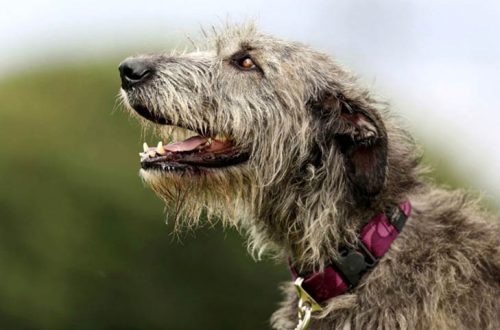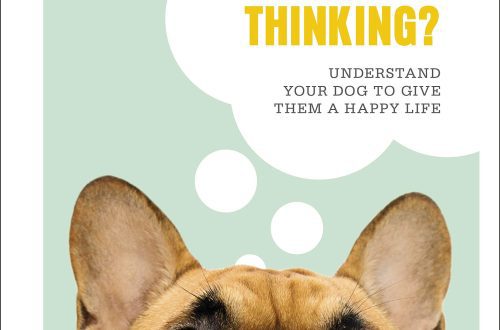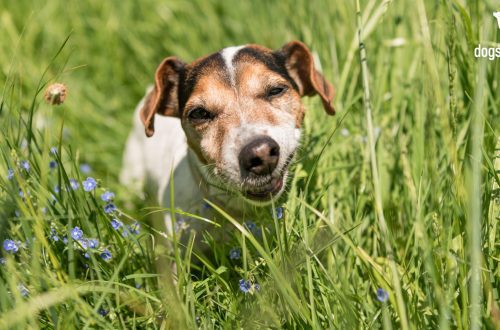
How to raise a genius dog?
In recent years about dog intelligence we have learned more than in previous centuries. We know how they show their abilities in communication with us and even how they use us to solve their problems. Can we use this information to train dogs more effectively so that they are not a walking problem, but a joy and a full member of society?
 Photo: publicdomainpictures
Photo: publicdomainpictures
How did ideas about animal learning evolve?
For a long time, the psychology of animals was discussed from the standpoint of behaviorism. Behaviorism was founded by Thorndike and Skinner and dominated the 50s, 60s, and even 70s. The most famous behaviorist is Skinner.
The main idea of behaviorism is that behavior can be explained by fairly simple mechanisms, such as “stimulus-response”. And the idea of classical and operant conditioning can really explain a lot of things.
It is from behaviorism that the ideas of positive reinforcement and the use of the clicker in training a wide variety of animals, including dogs, came. This method is good because it allows you to train any animals, the difference is only in the speed of learning.
However, there is a weak point in behaviorism. For example, the fact that all behavior is explained through learning. In general, intelligence is not very important; to paraphrase a phrase from a famous film, the area is dark and not subject to research. And critics of the ideas of behaviorism said that the experiments of behaviorists, for example, Skinner’s box, do not give an idea of the intellectual abilities of animals.
And recently, the cognitive approach is gaining more and more popularity, which is based on the fact that different types of animals have different intellectual abilities, and as for dogs, individual characteristics also play a huge role here.

Photo: maxpixel.net
How to make a genius out of your dog?
However, this does not mean that the cognitive approach negates the training of dogs on the basis of operant and classical conditioning. For example, it is very popular to train dogs (and not only dogs) using a clicker. The operant method is great not only for teaching dogs commands, but also for shaping the behavior we need. Moreover, it is good because it works with absolutely any dog. But sometimes it requires the work of thought and creativity from people. However, the result is worth it.
Operant conditioning can be combined with a cognitive approach to dog training. You just need to remember that the ability to learn by creating a stimulus-response connection is just one of the many cognitive abilities of dogs.
Dogs can learn by imitating others, they can “read” our intentions and rely on our prompting even without special training, they have different motivations at any given time, they have their own goals as well as memories of past experiences, and they are able to show flexibility in problem solving. That is, there are many mechanisms outside the concept of “stimulus-response”.
It is important to know how dogs think. For example, the experiment conducted by Anna McClosy is very indicative. They showed the dog a tasty thing, say, a bone, and put it behind a fence – quite long, but one that could be bypassed. There was a man behind the fence. The dogs made no attempt to bypass the fence – they ran straight to the place where the bone lay on the other side of the fence, barked, trying to get a man to give them a treat, ran back and forth, tried to dig, scrape the fence. Wolves, unlike dogs, immediately went around the fence and took the prize. However, if the dog saw that another dog or person was going around the fence, it immediately solved the problem. The wolves, on the other hand, were not at all guided by the example of a person.
This is evidence of how dogs rely on others, including people. And there are a lot of situations when they learn from others.
It is believed that the more a dog repeats a behavior, the easier it is for her to solve the problems associated with it. However, the Outhaus Group conducted an experiment that called into question this statement.
There was a fence in front of the dogs, which they had to go around on the right, and there an open gate was waiting for them, where the owner met and encouraged with treats or praise. One group of dogs was given the opportunity to go around the fence once or twice, and the dogs from the second group repeated this action six, seven or eight times.
It can be assumed that the dogs from the second group understood the problem better, and when the conditions changed slightly, they solved it more easily. But no! When the gate was opened on the left side, the dogs that did more repetitions of the passage to the right gate constantly rushed there – despite the fact that it was closed. That is, they saw that the previous solution did not work, but still tried to break through the closed door. While the dogs, which had one or two repetitions of the passage to the right gate, showed much more flexibility and very quickly found an unmistakable alternative exit – they went to the gate on the left side.
So repetition is not always the mother of learning. Sometimes, repeating the same action over and over will greatly reduce a dog’s creativity and flexibility. Conclusion – necessary create diversity, including in terms of solving the problems that we set for the dogs.

Photo: flickr.com
Dogs can cunning (to varying degrees, which depends on the individual dog). For example, a study by Juliane Kaminski proved that dogs are perfectly aware of whether a person sees them. Moreover, they know very well the difference between a lit area and darkness. So don’t be surprised if your pet becomes less obedient if he thinks you can’t see him.
It’s important understand strengths and weaknesses your pet. For example, does he rely entirely on human prompting, or is he more independent in making decisions? How ready is he to tune in to your wave? Does he show initiative? Is he capable of cunning?
All this is important to know in order to build the right dog training strategy.
We can say that training a dog is akin to art. And each pet is a personality that requires an individual approach. They are able to adapt to us and be creative. Are you capable of it? The answer to this question depends on whether you can raise a genius dog.





